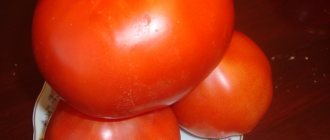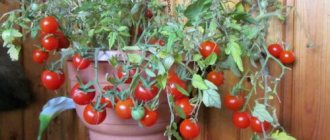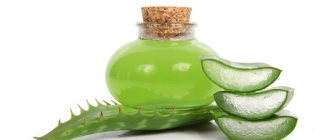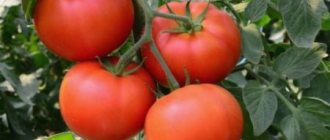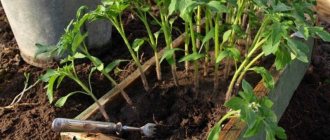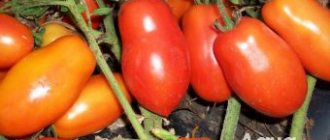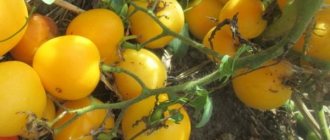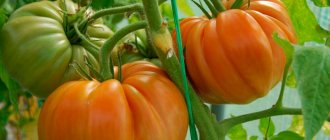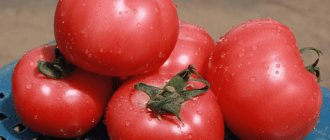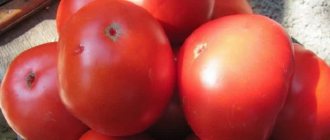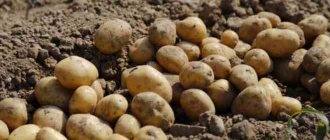A tomato that every gardener and farmer can afford. A citrus garden means discerning taste, rich harvests, and the ability to plant in almost all territories of Russia. The secrets of cultivation come down to standard agrotechnical techniques.
| Height | Landing location | Ripening time | Fruit color | Fruit size | Origin | Fruit shape |
| Tall | Greenhouse, Open ground | Late ripening | Yellow | Average | Variety | Plum-shaped or oval |
Description and characteristics of the variety
The Citrus Garden tomato is a raceme variety. It belongs to a variety of non-standard indeterminates and is prone to vigorous vegetation.
Ripens quite late - after 120-128 days from germination. Fruits until October.
What features are characteristic of bushes:
- stem height 2-2.2 m;
- thickened shoots;
- moderate spreading and density;
- medium degree of foliage;
- 8-10 tomatoes are tied on 1 bunch;
- the number of fruitful branches is within 10.
The variety has excellent immunity and is well hardened against most pathogens.
Description for tomatoes:
- average weight within 100 g;
- elongated shape;
- bright golden color;
- the flesh is fleshy, juicy, tender;
- the skin is quite durable.
Sweet fruity notes are noticeable in the taste.
Can be used universally. Lemon tomatoes are used to prepare aromatic sauces and dressings for dishes. Salted and pickled for the winter. Offered in salads, cocktails, and slices.
Growing Tips
The seedling planting method will help you get a high yield. To obtain strong seedlings you should:
- Use universal soil for tomatoes;
- It is mandatory to maintain the room temperature at least 22 degrees;
- Timely watering;
- Provide the sprouts with at least 16 hours of daylight.
IMPORTANT! Before sowing, it is necessary to harden the seedlings.
The plant is unpretentious in care. Not dense planting is preferable; no more than three plants should be placed on 1 square meter of land. Decent results are achieved by following simple rules of agricultural technology:
- Weekly watering in the evening;
- Feeding with complex mineral fertilizer, up to 10 times per season;
- Loosening the soil;
- Weeding;
- Tying, preferably using synthetic fabric;
- Installation of supports.
See also
Description and characteristics of the San Marzano tomato varietyRead
Advantages of a hybrid
Florida 47 f1 tomatoes are designed for growing in open ground. But according to reviews from summer residents, in order to grow this species in cold climates, in these regions it is advisable to plant tomatoes in greenhouse conditions.
After planting the seedlings in the ground, the fruits will ripen in about 75 days, and if you calculate from the germination period of the sprouts, at least 110 days should pass.
Tomato Florida
The bushes of this type of tomato are quite tall, growing up to 60 cm. Their root system reaches a length of approximately 2.5 m and goes deep into the ground
The leaves of the bushes of this variety are quite wide, which is important during the hot summer - they protect the tomatoes from the scorching rays of the sun and prevent burns.
Note! On tomato bushes of this type, it is not necessary to remove the stepsons; they will not interfere with the formation of inflorescences and the proper ripening of fruits. Each brush will produce from 3 to 5 tomatoes
The fruits of this species have excellent taste and can be eaten both fresh and canned. In the latter version, they also perfectly retain their quality and shape.
Each brush will produce from 3 to 5 tomatoes. The fruits of this species have excellent taste and can be eaten both fresh and canned. In the latter version, they also perfectly retain their quality and shape.
This type of tomato is resistant to all kinds of diseases, but as a preventative measure, you can treat the bushes with a late blight remedy.
Formation
It is recommended to form the bush into 1 stem with the removal of all stepsons. In addition, it is recommended to trim leaves growing below the 1st flower cluster.
Tomato plants often suffer from fungal, bacterial and viral diseases. Fungal diseases include late blight, cladosporiosis, and macrosporiosis. To prevent these diseases, agronomists recommend treating plants before signs of disease appear with immunomodulators (immunocytophyte, Silk, Narcissus), biofungicides, and microfertilizers.
When plants are damaged by macrosporiosis, it can be cured by treating them with Alirin-B. But with the disease Late blight and cladosporiosis, it is usually only possible to contain the spread of the disease, or rather the fungus. To do this, you can use fungicides such as Ordan, 1% Bordeaux mixture, Abiga-Pik, as well as the disinfectant Farmayod.
Among bacterial diseases, tomatoes are affected by black bacterial spot and an infectious form of blossom end rot, although the latter is rare. The biological product Gamair helps against spotting. It is also acceptable to use Fitolavin, but it is more toxic.
Agricultural technology
Tomato "Florida" is recommended for growing in open ground throughout the summer-autumn period. But reviews indicate that in central Russia it is better to grow this hybrid in greenhouse conditions.
- Taking into account the peculiarities of cultivation, seeds for seedlings can be sown from the beginning of March until the end of May.
- The ideal temperature for germination is +22-24 degrees.
- 10-12 days after germination, when the seedlings have already formed their first true leaf, it is time to pick. When replanting, it is recommended to shorten the roots of the sprouts by a third, this promotes the formation of a fibrous root system.
- 7-14 days before planting, the sprouts must begin to harden.
- At the age of 35-40 days, young bushes can be planted in open ground, provided that the threat of frost has passed.
- When choosing a place to plant tomatoes, keep in mind that “Florida” needs sunlight and moderate humidity. Ideal predecessors would be cucumbers, early cabbage or onions.
- Planting pattern 60 x 60 cm or 50 x 70 cm.
- As they grow, the bushes may need to be tied to stakes or a trellis. It is also possible to grow it spread out.
- Plants respond well to periodic fertilizing with mineral and organic fertilizers.
- They do not require special care. Watering can be carried out using the irrigation method. Tomatoes can suffer from high humidity, so you need to make sure that the soil is just damp, not wet.
Description of the Berberan tomato variety, characteristics and yieldRead
Thanks to its amazing productivity, high marketable and transportable qualities, the Florida hybrid tomato is very popular among farmers.
Tomato seeds “Axioma” F1 / Axioma F1, TM Nunhems – 50 seeds
Early ripening (98-105 days), large-fruited, indeterminate beef tomato
for film greenhouses. The plant has short internodes and good ventilation and excellent adaptation to the conditions of film greenhouses.
Large fruits (180-200 grams, and in some conditions more), without spots at the base, with high uniformity. Fruits are multi-chambered
, attractive round, slightly heart-shaped,
juicy
, have excellent taste, which is combined with high transportability and keeping quality.
A characteristic feature of the hybrid is an intense red, uniform internal and external color
and the absence of white and green veins.
Axiom sets fruit perfectly even in unfavorable conditions
. The internodes are short, the plant is powerful, open, well ventilated, with a high level of generative capacity, the fruits are well protected from sunburn.
It has a high level of resistance to verticillium wilt (Va, Vd), fusarium (Fol: 0.1), tobacco mosaic virus (ToMV), and is relatively resistant to nematodes (Ma, Mi, Mj). The hybrid is perfectly adapted for all growing zones.
For cultivation in early spring and autumn metro rotations.
——————-
Growing tomato
The growing process begins with sowing seeds in boxes filled with soil mixture. Before sowing, the soil is fertilized and marked every 5 cm to a depth of 1 cm and the seeds are laid out every 1 cm. You can grow seedlings without picking seedlings, and the seeds are sown directly in pots.
The optimal temperature after sowing seeds and when seedlings emerge is 24-26°C. After the cotyledons open, the temperature is reduced to 18-20°C during the day and to 15-16°C at night. After 7-10 days, the temperature is increased to 20-22°C in sunny weather, 18-19°C in cloudy weather and to 17-18°C at night. Picking begins when the first true leaf appears. The diameter of the pots is 8-10 cm.
Transplanted seedlings are watered with warm water and shaded for 2 days. After the first cluster appears in the buds, the temperature is reduced during the day to 18-20°C, at night to 16°C. The optimal soil temperature is 18-20°C. 10 days before planting, watering is sharply reduced, while simultaneously lowering the temperature, which is good for hardening the plants.
The age of seedlings depends on the size of the pots, growing period, growing conditions and is 8-10 weeks. After picking, the distance between plants should be such that the leaves do not overlap each other. When the seedlings are in the phase of 8-11 true leaves, they are planted in a permanent place.
When choosing a planting scheme, as experience shows, it is better to adhere to the recommended density of 2-2.5 plants per m² (according to a two-row scheme 70+50×80-90 cm, or single-row 60-70×80 cm), and thickened planting does not provide additional benefits.
Soil for tomatoes
They begin to prepare the soil in the fall. To improve the soil structure, you can add organic fertilizers, straw or peat. It is also recommended to use green manure (green manure) and then incorporate it into the soil. Plowing should be carried out to a depth of 30-40 cm, pH 6.0-6.5.
Tomato care
The optimal air temperature during the growing season is 16–28°C. Soil temperature: summer: 20-23°C, winter: 16-18°C. The optimal difference between day and night temperatures is 6-8°C. If plant development slows down, the night temperature is increased, which promotes increased biomass growth.
To improve fruit set, the flowering inflorescences are shaken. All stepsons from the axils of the leaves are removed, and only the main trunk remains. If the top is broken, the last stepson replaces the main shoot. When they reach a height of 2 meters, the plants are pinched (during this time, up to 11 clusters are formed).
It is advisable to shape the brushes.
Fertilizer
for tomatoes
The main dressing is done in the fall - this accounts for about 70% of the mineral nutrition (P, K). Potassium fertilizers are supplied with K2SO4 up to 20-25 kg/ha; at high pH, this dose can be increased. In the spring, when planting, give starting fertilizer (monopotassium phosphate and ammonium nitrate 300 kg/ha).
With this scheme, the plants are not fed for 3-4 weeks. The fertilization system should be based on soil analysis and take into account the stage of plant development and weather conditions.
To prevent the appearance of signs of calcium deficiency (end rot), foliar fertilizing with a solution of calcium nitrate (25 g/10 l of water) is carried out three times in a row after 4 days.
Phosphorus should be given special attention at the beginning of development, for the formation of the root system, and during the formation of flowers and ovaries
